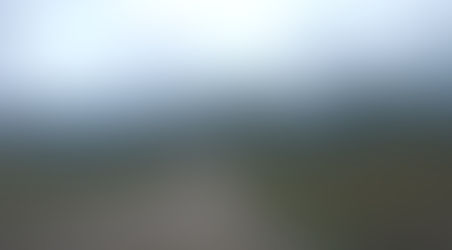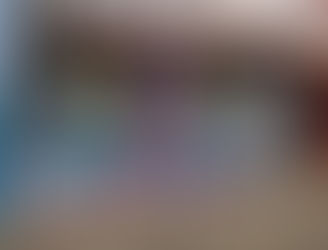Puerto Varas and woofing
- asiaquentin
- 26 déc. 2017
- 5 min de lecture
We had 2 woofing opportunities to choose from: one, close to sunny beaches in the center of Chile, but instead we've decided to head south once again, in the area of Puerto Varas- town relatively close to the place of our first woofing. Due to the weather, the first time we didn't take the time to visit this beautiful area, so we've decided to fix it.

Woofing
The job that we've applied for was at an organic farm producing vegetables, fruits and herbs for the restaurant of a luxury hotel. But on the spot we've discovered that the "farm" actually belongs to the hotel and is integrated into the complex. Guests can even take a walk around the patches and see where the products they've eaten come from.
Just after our arrival we had a tour of the property and were introduced to the staff (well, part of it as there are over 30 employees for 15 rooms).
The hotel is ultra luxurious and with a modern design (the owner is an architect) and you can book a room for only 400€ per night (yes, that's an average mensual salary in Chile).
Well, that's not exactly our cup of tea... We've never thought that we'll be volunteering to feed super rich people ^^!

Fortunately, the first impression turned out to be a little misleading, because while working on the farm we were relatively cut off from the hotel universe.
And as a bonus, we've could use hotel's kayaks and bikes for free and make small excursions. Unfortunately, the seaplane (used to avoid traffic jams at the entrance of Puerto Varas during the high season) was reserved only for the rich.
We've spent two weeks on this woofing, housed in hotel's employees habitation near the farm. We've worked (5 hrs per day and 5 days per week) with two Chileans who were about our age and downright friendly. The tasks varied a lot, there was a lot of chit-chats, and a magnificent view of the volcano, so all in all we've enjoyed it. And an icing on the cake: the music during working hours was very different from the one at our first woofing place- rock, hip hop and ska instead of the "pop-local" music of a small and (very) local radio station.
This time we had a wonderful weather - only sun for two weeks, so we enjoyed the weekends and the afternoons to do some hikes and visit Puerto Varas, which was 27 km from our place:
Parque Nacional Vicente Pérez Rosales, located next to Llanquihue Lake (pronounced a bit like "Yankee way") is separated from the border with Argentina by a mountain range and was the first protected park in Chile.

The Desolacion Trail.
We arrived at the village of Petrohué, the starting point of the trail and he boat dock for the tourists boats on the lake., late in the morning.
The trail on the eastern side of the Osorno volcano offers incredible views of the park, the lake, and of course the volcano. The complete hike takes about 8 hours. We didn't finished it, because the landscapes on the last kilometers are less interesting and what's more, we've risked to miss our last bus back home at 18.30. In all, it took us around 6-7 hrs, but we've took our time while doing the last part of the trail.

The first 5 hours, we've walked under the boiling heat and the strong sun (Chile struggles with the growing ozone hole, so the sun burns much stronger than in Europe). What's more, we haven't had that much of water with us (the only shop at Pertohué was closed when we've arrived).
The sandy soil all the way up didn't facilitate our struggle as well. It was a rather physically challenging climb, reinforced by the heat and thirst.
So one can only imagine the joy when, on our way back, we've reached the lake and we could finally fight out dehydration (at this point we didn't bothered with the hygienic precautions).
On our way back to the Petrohué's bus stop we've decided to follow the beach, just not to walk the same path. The forester, with whom we had spoken just before leaving, had told us that it was passable ... in fact at times it was necessary to climb on the trees, or walk on sharp and submerged pebbles, but again, the views rewarded the effort.
The next day we went back to the same park and tested another trek. It started at Laguna Verde, passed through the El solitario trail to reach the waterfalls of Los Saltos de Petrohué.
We've started at the Laguna Verde which bears his name thanks to micro algae that gives it this greenish / turquoise color, right next to Lake Llanquihué.
From there we did a good hour of walking on the roadside (fortunately there were very few cars passing) to get to the entrance of the El Solitario trail.
Even if this trek is also located just by the Osorno volcano, the vegetation changes completely compared to the Desolacion. Desolacion leads almost all the time through the desert, here there was plenty of trees.
At least at the beginning ... halfway through we had to cross a large desert area on which lava flows in case of a volcano eruption. The problem was, that the path's marking was very poor (before leaving we've received instructions to "follow stones painted with arrows" that actually reminded more of the “treasure hunt” game), but apparently it was supposed to be a part of the fun of the trail :)

...And of course we've ended up getting lost. ^^ Luckily, to get to the waterfalls we had only to follow down the slope in the direction of the sound of the waterfalls.
Too bad, that we had to pay to see them (and it was rather expensive: almost 6 € per person for foreigners, but ... for all other hikes we didn't pay at all... so we just hope that the money goes for the park preservation). It made us feel funny, to arrive in the middle of a crowd of tourists after the calmness of the previous part of the track (there is a road that passes right next to Los Saltos and in the afternoon it's probably the most frequented), but even with this inconvenience the waterfalls made their impression with a buzzing sound of water brewed on the rocks down the falls.

During our stay we did not miss to also visit the town of Puerto Varas as well. This town, established by German settlers, was a supply point for us (there were actually no shops closer to the hotel). It is also a good place to taste some of the local craft beers (the German tradition obliges), or just to sit on the shore and look at the lake (yes, Llanquihué Lake for European standards is more like a sea than a lake).
























































Commentaires